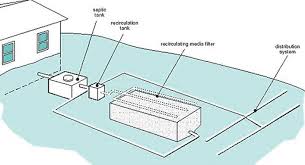If a septic system drain field is installed to close to a pond, the sewage can leach into the pond. This is the reason ordinances where made to prevent uniformed home owners from polluting there own water bodies.
Excessive weed or algae growth in the water near your shore. Other nutrient sources such as sediment and lawn fertilizer runoff, or the re-suspension of shallow sediments could also lead to this type of problem. Septic systems, however, are often prime suspects as sources of nutrients.
Unpleasant odors, soggy soil or sewage flow over the land surface. These symptoms often indicate failure and the need for drastic action such as replacement of the system. Under these conditions, wastewater could travel directly into nearby surface waters instead of being treated in the soil.
Septic fields have specific guidelines regarding setbacks. You can obtain your local set back guidelines from your Township in which your permit is issued, or in some cases it can come from the county. Leach fields normally must be 100 feet from streams, rivers, water supply wells, oceans, lakes or reservoirs, a pond may be considered one of these. However more strict clearances and distances than this may be required in your area. Local soil and rock conditions can make these "rules of thumb" unreliable. Your water table may also play a factor in these distances.

People will normally put the house where they want it and the septic then gets placed second. . The septic should be sighted first (obviously taking into account where someone MAY want the house) and then work the house around the septic and pond. A home owner can always install a pump system to then pump the sewage to a location away from the pond if the natural drainage is towards pond.
According to the Michigan State University Extension Service and local health departments, when a septic system is correctly located, adequately designed, carefully installed and properly managed, you will have a waste disposal system that is simple, economical, effective, safe and environmentally sensitive.
A septic system usually is made up of a septic tank and a drain field. The septic tank is usually made of reinforced concrete, is buried and watertight. This tank receives untreated household waste. The drain field consists of a series of perforated pipes (pipes with holes in them), which distribute the liquid from the septic tank to the surrounding soil. Although even the best designed and installed system will eventually fail, proper maintenance will ensure a longer lasting waste disposal system.
If you have any questions about your septic set back give us a call at 989-239-0525. We can look up your ordinance and get you the needed information.
